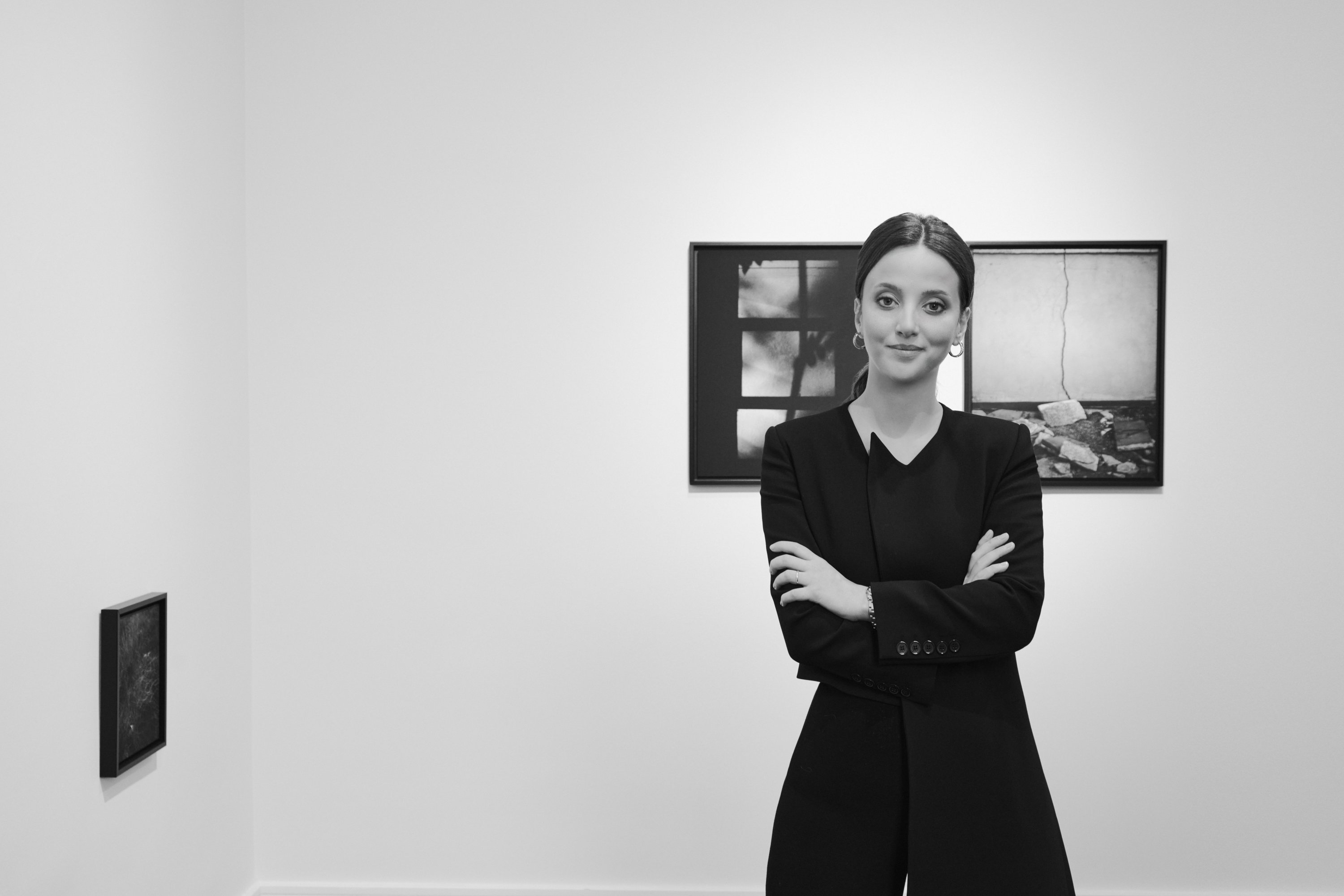© Turkuvaz Haberleşme ve Yayıncılık 2024
The "Lost Distance" series, prepared collaboratively by Vision Art Platform and Mert Acar, invites the audience to go beyond the visible. In this unique exhibition that captures the interest of art enthusiasts, we thoroughly explore Mert Acar's artistic journey and the interaction of the Vision Art Platform with his artwork in an interview.
The fact that looking at the world through the artist's eyes and taking photographs is a continuous journey has become a fundamental aspect shaping Mert Acar's artistic practice from day one. In his own words, this journey is a process with a constantly flowing visual image and intertwined momentary pauses.
The artist, noting that experiencing space by walking creates a transcendental state where speed pushes the landscape into the background, expresses that the gaps between these pauses sometimes extend the distance between captured photographs to hundreds of kilometers. However, this distance disappears as if it never existed as the photographs come together in the process.

"'Lost Distance' is a series where this photographic journey develops simultaneously through two different accumulations. In this series that combines two separate perspectives, there is an imaginary and distant spatiality dominated by entirely black and white photographs on one side. Elements like lighthouses, ancient city ruins, iron garden gates and cracks in the walls bring together a selection that seems to create their own universes," Acar explained.
On the other side, there is a closer perspective focusing on colorful tones and drawing attention to the spatial anomalies of today. The artist's practice, referred to as a "snapshot," focuses on capturing the essence of the moment. These two different approaches, combined with sound, video and other installations, double the impact of the Vision Art Platform. "Lost Distance" thus becomes a recognition that brings together the two different ends of the exhibition both physically and fictionally.
When viewed through Mert Acar's lens, "Lost Distance" is not just an exhibition but also an expression of exploration and seeking meaning. This exhibition offers viewers the opportunity to navigate beyond the visible and explore the universal language of art.
The "Absence" series, born during the pandemic, captures a perspective that traces the absence of objects in the landscape and the void they leave behind. Acar reflects on the fundamental concepts that guided the creation of this series, stating, "The pandemic shifted the outdoor environment to an unprecedented state of tranquility. While I previously preferred photographing uninhabited spaces, the routine flow of life brought me a sense of solace. However, as the pandemic unfolded, the routine was replaced by an unsettling unknown. 'Absence' seeks to document the emotions, spaces and remnants left behind by emotions, places and individuals erased from the daily course of life."
When asked about the anticipated reactions from viewers, Acar emphasizes the absence of specific expectations. "I do not seek a predefined response from the audience. Witnessing the emergence of new thought processes in their minds is sufficient for me. The dialogue established with the audience is valuable and enriching."
Acar sheds light on his process of selecting and incorporating alternative perspectives and fictional elements into his work. "My initial focus is on the experience, particularly the relationship with space. The relationship influences my artistic practice, and the inherent fiction arises not on a physical but a conceptual plane, thanks to the medium of photography. Spatial experience shapes my photography practice, guiding me in creating a narrative."
Mert Acar and curator Melis Golar engaged in a dialogue during the preparation of the exhibition, and the dual structure of the "Lost Distance" project became evident. Personal experiences, reflecting dual situations in his life, served as inspiration for the exhibition. Works like "Detour" encapsulate the essence of his experiences, capturing the constant shift between what is approaching and what is left behind. "BP," featuring pipes extracted from the interior of a dilapidated structure, contributes to reducing the perceived distance between the photographic surface and space.

Nisa Taşyar Savaş, the owner of Vision Art Platform, said: "Our solo exhibition 'Lost Distance,' which we have been preparing with Mert Acar for the past four years, will be a cornerstone event for our gallery. Our exhibition aims to focus on seeing beyond the visible and approaching the world from different perspectives. By focusing on both near and distant points through photography, we extract mental and spatial alternatives from everyday life."
"Mert Acar's photographic practice and life trajectory narrate the dominant theme of "lost distance" from various perspectives in our exhibition. Our exhibition invites the audience to contemplate and explore the world from different perspectives," she added.
"When evaluating the interaction of our artwork on the platform, we acknowledge the multi-layered relationship between humans and space. We carefully select exhibition spaces and create a suitable knowledge base for each exhibition. Art emerges not to break and tear down but to perfect and construct. Therefore, as the Vision, we build our narratives by creating a common language with our artist friends, relying on both our academic artists and technical skills," she elaborated.
Regarding the interaction of visual and auditory elements on the platform, a simple question forms the basis of experiencing artworks: "What do you see?" The elements inviting the audience, including shape, lines, color, texture and auditory components, direct them to see and experience the artwork. Based on our accumulated knowledge, preferences, and reactions, we establish a relationship with the artworks. This relationship transforms into a structure that increases value both visually and intellectually.
"However, in a work of art, there can be deeper layers that are not visible to the naked eye. At this point, the information the artist wants to convey comes into play, and our gallery's biggest task is to bring these two sides together in an ethically artistic way. We believe we have achieved this goal on our platform, and with each passing day, we understand how valuable our work is," she remarked.
